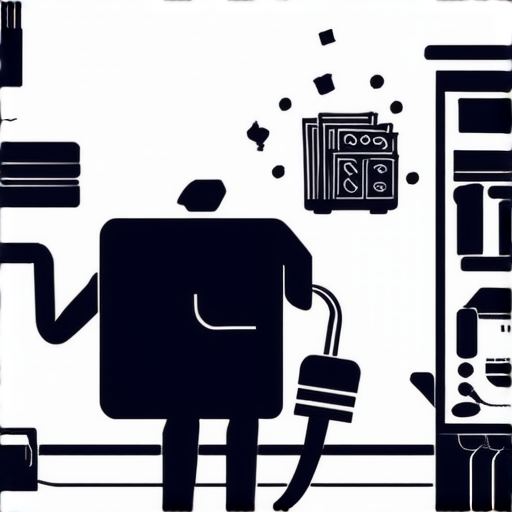Are you tired of living paycheck to paycheck, struggling to make ends meet, and wondering if it’s even possible to save money like a pro? With the right strategies and mindset, anyone can develop healthy financial habits and achieve their savings goals. In this comprehensive guide, we’ll explore 10 brilliant money-saving tips that will help you save like a pro at home, from understanding the 50/30/20 rule for budgeting to implementing the 30-day waiting period for non-essential purchases.

The 10 Rule for Saving Money
I’ve developed a simple yet effective savings rule to help me manage my finances and achieve my long-term goals.
- Set aside 10% of your income : This may seem like a small amount, but it’s a great starting point for building a safety net and making progress towards your financial objectives.
- Make it automatic : Set up a separate savings account and arrange for a portion of your paycheck to be transferred into it regularly. This way, you’ll ensure that you save consistently without having to think about it.
- Take advantage of employer matching : If your employer offers a 401(k) or other retirement plan matching program, contribute enough to maximize the match. This is essentially free money that can help your savings grow faster.
- Monitor and adjust : Periodically review your budget and savings progress to identify areas for improvement. Adjust your contributions as needed to stay on track.
- Avoid dipping into savings : Treat your savings account like a separate entity from your everyday spending money. Try to avoid withdrawing from it unless absolutely necessary.
- Consider a savings challenge : Try a savings challenge like the “52-week savings challenge” where you save an amount equal to the number of the week. (Example: Week 1 – Save $1, Week 2 – Save $2 etc.)
- Automate irregular expenses : Set aside funds for infrequent expenses like car maintenance, property taxes, or holiday gifts to avoid going into debt when these costs arise.
- Build an emergency fund : Aim to save 3-6 months’ worth of living expenses in an easily accessible savings account. This will provide a cushion against unexpected events like job loss or medical emergencies.
- Invest for the future : Once you have a solid emergency fund in place, consider investing in a diversified portfolio to grow your wealth over time.
- Review and revise your budget : Regularly reassess your income, expenses, and savings goals to ensure you’re on track to meet your objectives.
By following these steps, you’ll be well on your way to developing a sustainable savings habit and achieving financial stability.
How to Save $1000 ASAP
I’m looking to save $1000 quickly, and I want to explore various options to achieve my goal.
-
Sell Unwanted Items
- Declutter your home and sell items you no longer need or use.
- Use platforms like eBay, Craigslist, or Facebook Marketplace to reach potential buyers.
- Consider hosting a yard sale or garage sale to get rid of multiple items at once.
-
Reduce Expenses
- Track your expenses to identify areas where you can cut back.
- Cook meals at home instead of eating out or ordering takeout.
- Cancel subscription services you don’t use, such as streaming services or gym memberships.
-
Take on a Side Hustle
- Offer your skills to clients through freelance platforms like Upwork or Fiverr.
- Participate in online surveys or focus groups to earn extra money.
- Deliver food or packages through companies like Uber Eats or Amazon Flex.
-
Borrow or Rent
- Consider borrowing money from friends or family members, but make sure to set clear repayment terms.
- Rent equipment or tools instead of buying them outright.
- Look into peer-to-peer lending platforms or crowdfunding options.
-
Save Your Change
- Set aside coins and bills in a jar or piggy bank.
- Use apps like Qapital or Digit to automatically save small amounts from your checking account.
- Round up purchases to the nearest dollar or five dollars to accumulate savings.
-
Ask for a Raise
- Research your worth using salary calculators or talking to colleagues in similar positions.
- Prepare a solid case for why you deserve a raise, highlighting your achievements and contributions.
- Confidently ask your employer for a salary increase during your next performance review.
-
Use Cashback Apps
- Sign up for cashback apps like Rakuten or Ibotta to earn rewards on your purchases.
- Use browser extensions like Honey to find discounts and coupons.
- Link your credit card to cashback portals to earn rewards on your spending.
-
Participate in Online Gig Economy
- Sign up for platforms like TaskRabbit or Amazon’s Mechanical Turk to complete small tasks for pay.
- Deliver groceries or packages through companies like Shipt or GrubHub.
- Participate in online gig work through platforms like Fiverr or Freelancer.
-
Use Your Tax Refund
- File your taxes early to receive your refund sooner.
- Direct deposit your tax refund into a savings account or emergency fund.
- Consider using a tax refund app like TurboTax or H&R Block to optimize your refund.
-
Get Creative
- Start a blog or YouTube channel to monetize your passion or expertise.
- Sell handmade goods or crafts through platforms like Etsy or Redbubble.
- Develop a mobile app or game to sell through app stores.
Remember, saving $1000 quickly requires discipline, patience, and creativity. By exploring these options and finding what works best for you, you’ll be well on your way to reaching your financial goal.

The 30 Day Rule: A Simple Strategy to Cut Down on Impulse Spending
The 30 day rule is a simple yet effective strategy to help you stop impulse buying and develop healthier spending habits.
- How it Works: When you’re tempted to make an impulse purchase, commit to waiting 30 days before going through with it.
- Why it’s Effective: By delaying your purchase, you’ll have time to reflect on whether you really need the item and if it aligns with your financial goals.
- Benefits: The 30 day rule helps you:
- Avoid unnecessary purchases
- Develop self-control and discipline
- Save money and reduce debt
- Make more intentional purchasing decisions
- Real-Life Applications: Implementing the 30 day rule in your daily life can be applied to various situations, such as:
- Purchasing clothing or accessories
- Buying electronics or gadgets
- Making large purchases, like cars or homes
- Tips for Success: To get the most out of the 30 day rule, consider the following tips:
- Set reminders to check in on your decision after 30 days
- Keep track of your expenses and stay accountable
- Consider alternative options, like borrowing or renting items
- Conclusion: The 30 day rule is a powerful tool to help you take control of your finances and make more mindful purchasing decisions. By implementing this simple strategy, you’ll be well on your way to developing healthy spending habits and achieving your long-term financial goals.

Is Saving $200 a Month Good?
Saving $200 a month can be a good practice, depending on your financial goals and circumstances.
- Emergency Fund: If you’re building an emergency fund, saving $200 a month can help you reach the recommended 3-6 months’ worth of expenses relatively quickly.
- Debt Repayment: If you have high-interest debt, such as credit card balances, saving $200 a month can help you pay off the principal balance faster and reduce interest charges.
- Roth IRA Contributions: If you’re eligible, contributing $200 a month to a Roth Individual Retirement Account (IRA) can help you save for retirement and potentially lower your tax liability in the long run.
However, it’s essential to consider your individual financial situation and priorities before deciding whether saving $200 a month is good for you.
- Assess Your Expenses: Take a close look at your income and expenses to determine how much you can realistically afford to save each month.
- Set Financial Goals: Identify your short-term and long-term financial objectives, such as paying off debt, building an emergency fund, or saving for a down payment on a house.
- Create a Budget: Develop a budget that allocates your income towards necessary expenses, savings, and debt repayment.
By considering these factors and adjusting your savings strategy accordingly, you can determine whether saving $200 a month is a good fit for your financial situation.
Additional Tips:
- Automate Your Savings: Set up automatic transfers from your checking account to your savings or investment accounts to make saving easier and less prone to being neglected.
- Take Advantage of Employer Matching: If your employer offers a 401(k) or other retirement plan matching program, contribute enough to maximize the match, which can significantly boost your savings over time.
- Consider a Side Hustle: Explore ways to increase your income, such as taking on a part-time job, freelancing, or selling items you no longer need, to free up more money for savings and investments.
Is Saving $20 a Week Good?
Saving $20 a week may not seem like a significant amount, but it can have a substantial impact on your finances over time.
- The power of compound interest can help your savings grow exponentially, making it easier to reach your long-term goals.
- By setting aside $20 a week, you’re essentially committing to saving around $1,040 per year, which can be a great starting point for building an emergency fund or working towards a specific financial goal.
Why Small Savings Add Up
While saving $20 a week might not seem like a lot, it’s essential to remember that small, consistent contributions can lead to significant gains over time.
- Compound interest works in your favor, allowing your savings to grow faster and faster as the years pass.
- By saving regularly, you’ll develop healthy financial habits and reduce the likelihood of overspending or accumulating debt.
Turning $20 a Week into Something Bigger
With patience and discipline, your weekly savings can snowball into something much larger.
- Assuming a 5% annual return on investment, saving $20 a week could translate to around $10,500 in just five years.
- As your savings grow, consider exploring investment options, such as high-yield savings accounts or low-cost index funds, to maximize your returns.
Conclusion
Saving $20 a week is a great starting point for anyone looking to take control of their finances and work towards their goals.
Remember, consistency and patience are key, and even small, regular contributions can lead to significant gains over time.

Is Saving $1,000 a Month Realistic?
Saving $1,000 a month may seem daunting, but it’s achievable with a solid plan and discipline.
- Start Early: Begin saving as soon as possible, ideally in your 20s or early 30s, to take advantage of compound interest.
- Create a Budget: Track your income and expenses to understand where your money is going and identify areas for reduction.
- Automate Savings: Set up automatic transfers from your checking account to your savings or investment accounts to make saving easier and less prone to being neglected.
- Increase Income: Explore ways to boost your income, such as taking on a side hustle, asking for a raise, or pursuing additional education or training.
How Much Can You Save in a Year?
If you save $1,000 per month, you’ll accumulate:
- $12,000 in a year
- $24,000 in two years
- $36,000 in three years
Investing Your Savings:
Consider investing your savings to grow your wealth over time. Even small investments can add up significantly with compound interest.
- High-Yield Savings Accounts: Earn around 2% interest on your savings, which can help keep pace with inflation.
- Index Funds or ETFs: Invest in a diversified portfolio of stocks or bonds, potentially earning returns of 7-10% or more over the long term.
Conclusion:
Saving $1,000 a month requires commitment and discipline, but it’s a realistic goal for many people. By starting early, creating a budget, automating savings, and increasing income, you can achieve financial stability and work towards long-term goals.

0 Comments